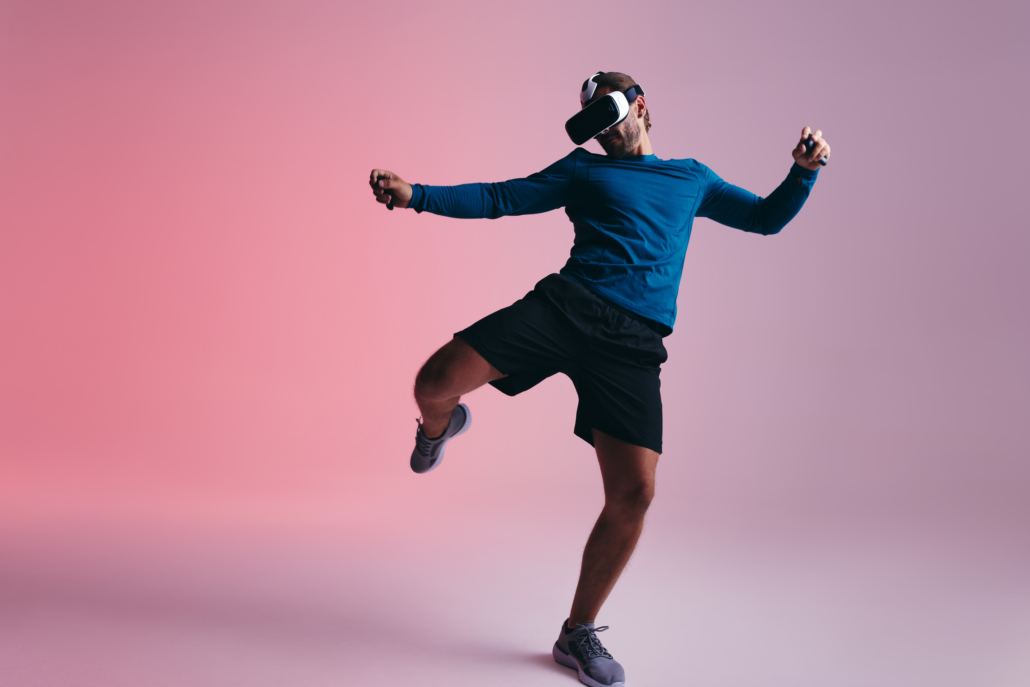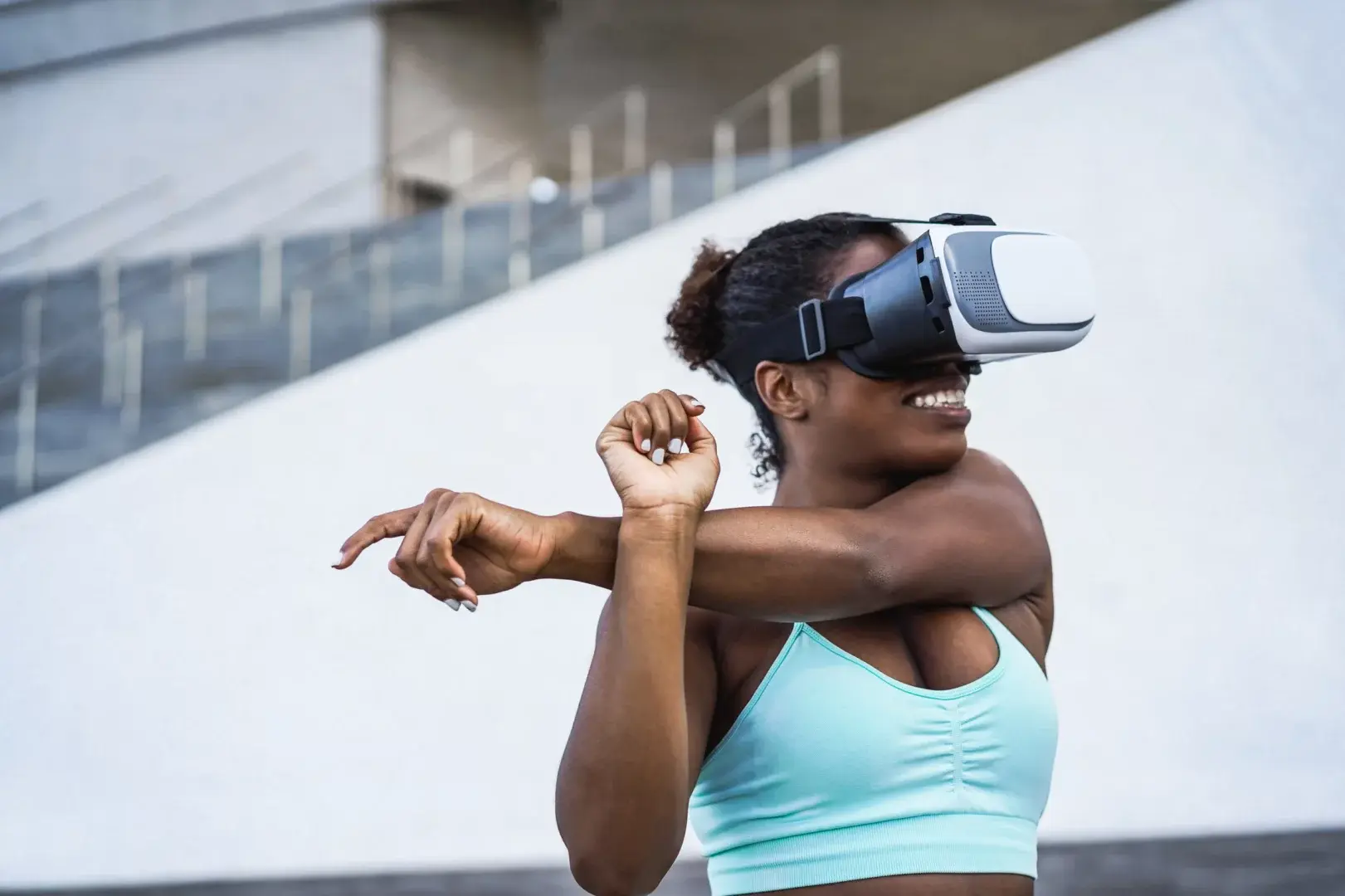Virtual reality for sports: Fad or game-changer?
Virtual reality for sports training is becoming an option for many athletes. While it’s not for everyone, it does have potential to help support the development of technique and even help minimise some injury risks.
Virtual reality for sports training: Should you dive into ‘VR’?
November 22, 2003 was the date of one of England’s greatest sporting achievements of the modern era. In Sydney, Australia they dramatically won the Rugby World Cup in the last minute of extra time with a drop goal from Jonny Wilkinson.
The team that played that night quickly became legends across the country, with many receiving honours from the Queen. One of them was hooker Steve Thompson. You would expect that World Cup win was the greatest of Thompson’s life, yet in 2020, he said in an interview he didn’t even remember playing in the match. This wasn’t just a case of adrenaline blurring out the details as we hear from sports stars after victories either. This was very likely CTE, or chronic traumatic encephalopathy, coupled with early-onset dementia. CTE is a gradual shrinking of certain key areas of the brain and it is not uncommon in athletes.
There has been a lot in the news in recent years around concussion in sport. Maybe you’ve seen the 2015 Will Smith film Concussion that considered how repeated blows to the head while playing American football can add up to cause some very serious consequences. It is likely the multiple concussions and blows to the head Thompson received during his career had contributed to his condition.
Perhaps you’re already putting two and two together in your head? Contact sports like American football, rugby and Australian rules football are hugely physical – maybe this was inevitable?
However, perhaps even more frightening (given the nature of the sport), is the increasing frequency with which soccer players are reporting signs of dementia. This is thought to be linked not to impact with other players, but to heading the ball. Many high-profile players have spoken out about this, including former England captain Terry Butcher, who called for the gradual phasing out of heading to prevent “catastrophic” brain injuries.
As a result of the growing awareness around head injuries, there are many new protocols in place across sport. These range from the use of independent doctors in some sports to ensure player safety is prioritised ahead of team needs following a knock, to a reduction in the amount of heading allowed in youth soccer practice in the US.
More recently, advances in technology have helped, offering training alternatives to hopefully reduce the incidence of head injuries altogether. Additionally, such advances may help with diagnosis and monitoring of head injuries should they occur. One such technology that you may not have considered in this fight is virtual reality.

What is virtual reality supposed to do?
For a lot of us, we hear words like Alzheimer’s and dementia and place them in the same bracket as sorting out your pension – something we don’t need to think about as they’re the concern of old people.
In reality, though, when you consider the number of ex-athletes who are being diagnosed with such issues, it certainly is something we should pay a lot more attention to. This is especially the case when you consider many of these diagnoses are not linked to crunching tackles in rugby or body-rattling collisions in contact sports. In fact, as is the case in soccer, they’re a result of many accumulating small head impacts, such as simply heading a ball throughout a career.
Often, in fact, these repetitive head impacts (RHI), also known as subconcussive impacts, are so innocuous they do not even register to the player or staff that they’ve occurred. But they add up.
This is where virtual reality may come in. It has attracted much interest as a training solution because it not only allows safe, repeatable training tasks, but it affords complete control over the training environment. Before sport, these benefits made virtual reality a favourite for training surgeons. Obviously, this is an environment where you don’t get much wiggle room to make mistakes!
Although, it’s accepted this removes the vital stress elements of the task, which we might equate to playing in front of 80,000 people, but it does provide a useful learning platform. It is with these reward-without-risk benefits that there is potential of carryover to sport.
One key factor here though is realism. As humans, we have a great ability to disengage from the unrealistic, which is why as computer games graphics continue to improve, their popularity continues to grow. Virtual reality technology now is at a point where our brains are willing to accept what we see when we are immersed in that space. This can go as far as to even include the details of opposition players, specific stadia and the ability to program in actual events that took place in yesterday’s match.
This enables a multitude of uses across a growing number of sports. Briefly, this could be replaying a set piece where an error was made in the match at the weekend or allowing a rehabilitating player to immerse themselves in recent action so they can still consider their decision-making during such plays.
But back to concussion. There is growing evidence that skill acquisition (the way we improve at the technical and tactical side of a sport) and virtual reality can co-exist. So, let’s have a look at the evidence to see how sportspeople in the near-future might be able to continue to hone their skills while reducing the risks associated with head injuries.
The science of virtual reality for sports training
Research into virtual reality and sport has typically focused on closed skills such as golf putting and goalkeepers catching crosses rather than more chaotic match play. The reason for this has been due to limitations in technology. But as stated above, this is quickly becoming less of an issue. In fact, a recent paper found virtual reality technology is now sufficiently good that it can differentiate between novice and professional players. This is really important, as it means if professionals want to use the technology, it will actually recognise their ability level and respond more critically.
This may be different to the experiences of those who can remember the good old Nintendo Wii where anyone could bowl a strike or serve an ace! In fact, such platforms may have potential for use especially with athletes who are injured and need to maintain a level of perceptual-cognitive skill while avoiding the physical load experienced in real environments. And this, of course, is key with head injuries.
If we are able to train soccer players how to head a ball without the impact, or train an AFL player how to ‘mark’ a high ball without the genuine threat of being smashed by the opposition, or train a running back how to pick a line through the defence without having their head taken off, then we could really be onto something. Couple this with an increasingly immersive experience, and use of technologies could soon become the norm.
Is ‘VR’ something that might work for you?
This technology is rapidly improving and for some of these more complex tasks it’s reasonable to think it isn’t far away at all. Some of the top sports teams in the world are already using some of the more advanced technologies. The advantages will go one step further than solely helping to prevent brain injuries as well.
Practically speaking, real-world training is always subject to constraints of time, geography, equipment, weather, or number of participants. These could all be remedied by the option of playing in a virtual world.
It’s also important to point out that of course virtual reality won’t be replacing training entirely! Of course, there is still the fitness side of any sport to consider that can’t be achieved without getting a sweat on while on the field. It does, however, have huge potential to help support the development of proper technique which, as has been suggested across the research, could help promote safer options when it finally comes to game situations.
‘VR’ and sports: Take-homes
A growing body of evidence supports negative consequences for some players as a result of repetitive head impacts that occur in both training and matches. Sporting authorities continue to fund further research into the area as well as issuing new guidelines to make current practices safe.
However, by reducing the opportunities to practice certain important skills, concerns about a lack of technique when in game situations have been raised. Virtual reality offers a solution by allowing players to practice in a realistic and safe environment. This means if players are to compete normally, it can hopefully be done in a safer way with good technique, improved partly virtually, to help reduce head impact forces.
CTE can currently only be diagnosed after someone has died and the brain can be examined. Steve Thompson has now pledged his brain for research after his death. As tragic as his and others’ stories are, perhaps advances in technology now mean that in the future such incidents will be far less common.
[optin-monster-shortcode id=”czosk0qsqzzsryj6gwot”]



